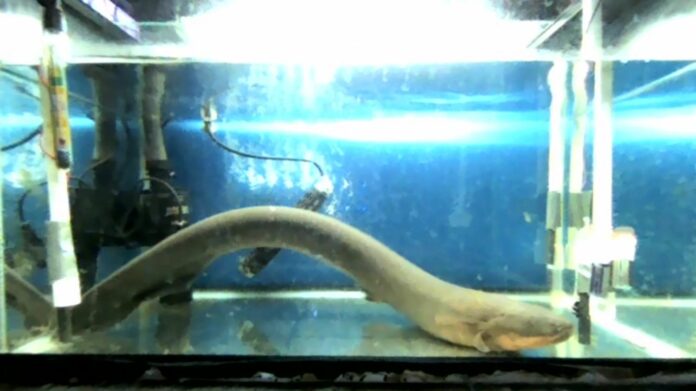Electric organ discharge (EOD), which can reach voltages of up to 860 V, is a well-known phenomenon associated with electric eels (Electrophorus sp.). Because genetic engineering has long used electrical solid pulses to transfer genes, scientists postulated that electric eels might be a gene transfer method in their watery habitat.
Electric eels can release up to 860 volts, enough to run a machine.
Scientists from Nagoya University found electric eels can release enough electricity to modify tiny fish larvae genetically. The study results expand on our understanding of the gene delivery method known as Electroporation. An electric field is used during Electroporation to open cell membrane pores temporarily. This permits molecules, such as proteins or DNA, to enter the target cell.
They reasoned that current flowing through a river could impact the cells of neighboring creatures. Environmental DNA, or DNA fragments found in water, can be incorporated by cells. They put the juvenile fish in their lab to the test by exposing them to a DNA solution containing a light-emitting marker to detect if the zebrafish had ingested the DNA. Next, they presented an electric eel and made it bite a feeder to release energy.

Assistant Professor Atsuo Iida from Nagoya University said, “Electroporation is commonly viewed as a process only found in the laboratory, but he was not convinced. I thought Electroporation might happen in nature.”
“I realized that electric eels in the Amazon River could well act as a power source, organisms living in the surrounding area could act as recipient cells, and environmental DNA fragments released into the water would become foreign genes, causing genetic recombination in the surrounding organisms because of electric discharge.”
“We found that 5% of the larvae had markers showing gene transfer. This indicates that the discharge from the electric eel promoted gene transfer to the cells, even though eels have different pulse shapes and unstable voltage compared to machines usually used in electroporation. Electric eels and other organisms that generate electricity could affect natural genetic modification.”
Other research has made similar observations regarding the effects of naturally occurring fields, such as lightning, on nematodes and soil microbes.
Journal Reference:
- Shintaro Sakaki, Reo Ito, Hideki Abe, Masato Kinoshita, Eiichi Hondo, Atsuo Iida. Electric organ discharge from electric eel facilitates DNA transformation into teleost larvae in laboratory conditions. PeerJ – Life and Environment. DOI: 10.7717/peerj.16596
